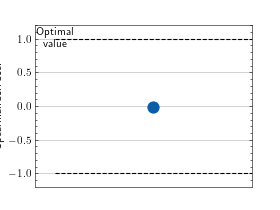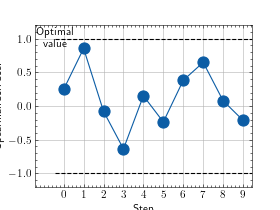Spearman Corr. Coef.¶
Module Interface¶
- class torchmetrics.SpearmanCorrCoef(num_outputs=1, **kwargs)[source]¶
Compute spearmans rank correlation coefficient.
where \(rg_x\) and \(rg_y\) are the rank associated to the variables \(x\) and \(y\). Spearmans correlations coefficient corresponds to the standard pearsons correlation coefficient calculated on the rank variables.
As input to
forwardandupdatethe metric accepts the following input:preds(Tensor): Predictions from model in float tensor with shape(N,d)target(Tensor): Ground truth values in float tensor with shape(N,d)
As output of
forwardandcomputethe metric returns the following output:spearman(Tensor): A tensor with the spearman correlation(s)
- Parameters:
num_outputs¶ (
int) – Number of outputs in multioutput settingkwargs¶ (
Any) – Additional keyword arguments, see Advanced metric settings for more info.
- Example (single output regression):
>>> from torch import tensor >>> from torchmetrics.regression import SpearmanCorrCoef >>> target = tensor([3, -0.5, 2, 7]) >>> preds = tensor([2.5, 0.0, 2, 8]) >>> spearman = SpearmanCorrCoef() >>> spearman(preds, target) tensor(1.0000)
- Example (multi output regression):
>>> from torchmetrics.regression import SpearmanCorrCoef >>> target = tensor([[3, -0.5], [2, 7]]) >>> preds = tensor([[2.5, 0.0], [2, 8]]) >>> spearman = SpearmanCorrCoef(num_outputs=2) >>> spearman(preds, target) tensor([1.0000, 1.0000])
- plot(val=None, ax=None)[source]¶
Plot a single or multiple values from the metric.
- Parameters:
val¶ (
Union[Tensor,Sequence[Tensor],None]) – Either a single result from calling metric.forward or metric.compute or a list of these results. If no value is provided, will automatically call metric.compute and plot that result.ax¶ (
Optional[Axes]) – An matplotlib axis object. If provided will add plot to that axis
- Return type:
- Returns:
Figure and Axes object
- Raises:
ModuleNotFoundError – If matplotlib is not installed
>>> from torch import randn >>> # Example plotting a single value >>> from torchmetrics.regression import SpearmanCorrCoef >>> metric = SpearmanCorrCoef() >>> metric.update(randn(10,), randn(10,)) >>> fig_, ax_ = metric.plot()

>>> from torch import randn >>> # Example plotting multiple values >>> from torchmetrics.regression import SpearmanCorrCoef >>> metric = SpearmanCorrCoef() >>> values = [] >>> for _ in range(10): ... values.append(metric(randn(10,), randn(10,))) >>> fig, ax = metric.plot(values)

Functional Interface¶
- torchmetrics.functional.spearman_corrcoef(preds, target)[source]¶
Compute spearmans rank correlation coefficient.
where \(rg_x\) and \(rg_y\) are the rank associated to the variables x and y. Spearmans correlations coefficient corresponds to the standard pearsons correlation coefficient calculated on the rank variables.
- Parameters:
- Return type:
- Example (single output regression):
>>> from torchmetrics.functional.regression import spearman_corrcoef >>> target = torch.tensor([3, -0.5, 2, 7]) >>> preds = torch.tensor([2.5, 0.0, 2, 8]) >>> spearman_corrcoef(preds, target) tensor(1.0000)
- Example (multi output regression):
>>> from torchmetrics.functional.regression import spearman_corrcoef >>> target = torch.tensor([[3, -0.5], [2, 7]]) >>> preds = torch.tensor([[2.5, 0.0], [2, 8]]) >>> spearman_corrcoef(preds, target) tensor([1.0000, 1.0000])
